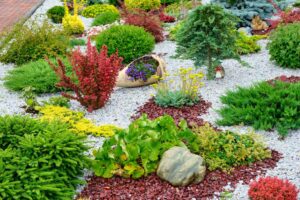Many dog owners face the same problem. Their backyard turns into a muddy mess after a few weeks of active play. Natural grass gets torn up, brown patches appear, and maintenance becomes a full-time job. This leads many pet parents to ask: is artificial turf good for dogs?
The answer depends on your specific situation. Synthetic grass offers real benefits like durability and easy cleanup. But it also has drawbacks you need to know before making this investment. Let’s explore both sides so you can make the right choice for your furry friend.
Is Artificial Turf Good for Dogs | Know The Reality
Artificial grass and dogs can be a great match when done right. Modern pet turf solves many problems that natural lawns create. Your dog won’t track mud inside anymore. You won’t see dead grass patches from urine. The surface stays green all year.
But synthetic grass isn’t perfect. It costs more upfront than natural grass. Some products can get hot in summer sun. Poor quality turf may trap odors if you don’t maintain it properly.
The reality is that artificial turf works well for most dogs and owners. About 70% of pet owners who switch report being happy with their choice. They save time on lawn care and enjoy a cleaner home. Dogs adapt quickly because the texture feels similar to real grass.
Quality matters more than anything else. Cheap turf products fail fast and create problems. Premium pet-friendly options last 10-15 years and handle daily use without issues.
At Lakota Design Group, we’ve completed hundreds of artificial grass installation in San Jose projects for dog owners. Most clients tell us they wish they had made the switch years earlier. The key is choosing the right product and getting professional installation.
What is the Best Artificial Turf for Dogs?
Not all synthetic grass works well for pets. You need specific features to create a safe, comfortable space for your dog.
Material Composition
The best pet friendly artificial grass uses polyethylene (PE) fibers. PE feels soft on paws and handles rough play. Look for products that mix PE with polypropylene (PP) in the thatch layer. This creates a more realistic look and better cushioning.
Avoid nylon-based turf for pet areas. It gets too hot and feels rough on sensitive paws.
Drainage System
Dogs produce a lot of liquid waste. Your turf needs excellent drainage to stay dry and odor-free. Choose products with a fully permeable backing that allows 30+ inches of water flow per hour.
The base layer matters too. Professional installers use crushed stone that lets liquids pass through quickly. Without proper drainage, you’ll fight odor problems constantly.
Pile Height and Density
Shorter pile works better for dogs. Aim for 25-35mm height. Longer grass looks nice but makes cleanup harder. Solid waste sits on top of short fibers instead of getting stuck deep in the pile.
Density prevents flattening in high-traffic areas. Look for turf that weighs 70-90 ounces per square yard. Dense fibers bounce back after your dog runs across them.
Special Features
Modern pet turf includes antimicrobial protection. This coating stops bacteria growth and controls odors naturally. It’s worth paying extra for this feature.
UV resistance prevents fading. Your turf should keep its color for years, even in direct sunlight. Check that products meet UV stability standards.
Some brands offer cooling technology in the infill material. This helps reduce surface temperature on hot days. If you live in a warm climate, consider this option.
Lakota Design Group specializes in selecting the right turf for each dog’s needs. We consider your dog’s size, activity level, and your local climate. Our artificial grass installation in San Jose service includes proper base preparation and drainage systems that prevent future problems.
You may read Can Dogs Pee On Artificial Turf?
Pros of Artificial Grass for Dogs
No More Muddy Paws
Synthetic grass eliminates mud completely. Rain doesn’t create puddles or soggy spots. Your dog stays clean during outdoor play. This means less cleaning inside your home and fewer baths for your pet.
Pest-Free Environment
Natural grass harbors fleas, ticks, and other pests. Artificial turf removes their habitat. Your dog won’t pick up grass burrs or be exposed to lawn treatment chemicals. This creates a healthier play area.
Durability That Lasts
High-quality pet turf handles daily wear better than natural grass. Dogs can dig, run, and play without damaging the surface. The grass stays level and attractive for years. You won’t see bare patches or worn trails where your dog runs.
Most premium products last 10-15 years with proper care. That’s longer than many natural lawns survive with active dogs.
Easy Maintenance
Cleaning artificial grass takes minutes instead of hours. Rinse away liquid waste with a hose. Pick up solid waste and spray the area clean. No mowing, fertilizing, or watering required.
This saves you about 50 hours per year compared to maintaining natural grass. The time savings alone can justify the investment.
Year-Round Beauty
Your yard looks great in every season. The grass stays green during summer droughts and winter cold. No brown patches from dog urine. No dead spots that need reseeding.
Safe Play Surface
Quality pet turf provides good traction. Dogs can run and play without slipping. The surface stays level, reducing injury risk. Some products include padding underneath for extra cushioning.
Water Conservation
Artificial turf needs no watering. In areas with water restrictions, this matters. You’ll save thousands of gallons yearly while keeping a beautiful yard.
Lakota Design Group helps San Jose homeowners choose turf that maximizes these benefits. Our installation process ensures proper drainage and base preparation for long-lasting performance.
Is Turf Safe for Dogs?
Safety concerns are valid when considering synthetic grass and dogs. Let’s address the main questions pet owners ask.
Health and Toxicity
Modern artificial grass is safe for pets. Quality products pass strict safety tests including REACH and ASTM standards. They contain no harmful chemicals or heavy metals.
The materials used are non-toxic. Polyethylene and polypropylene are the same plastics used in food containers. Dogs can safely walk, play, and even chew on the grass without health risks.
Cheap imports may skip safety testing. Always ask for certification documents before buying. Reputable brands provide these without hesitation.
Heat Concerns
Artificial turf does get warm in direct sun. On very hot days, the surface can reach uncomfortable temperatures. This is the biggest safety concern for pet owners.
You can manage heat in several ways:
- Install turf in shaded areas when possible
- Use cooling infill products that reflect heat
- Spray the surface with water before letting dogs out
- Create shaded rest areas with structures or trees
- Schedule outdoor play for cooler parts of the day
Modern cooling technologies reduce surface temperature by 30-40 degrees compared to older products.
Paw Comfort
Most dogs adapt to artificial turf within days. The texture feels similar enough to natural grass that they accept it quickly. Soft PE fibers prevent paw irritation or abrasion.
Some dogs with extremely sensitive paws may need a break-in period. Start with short play sessions and gradually increase time on the turf.
Behavioral Issues
Dogs naturally want to dig and mark territory. Quality installation prevents digging problems. The backing is secured to prevent pulling up edges. Proper base preparation makes it nearly impossible for dogs to dig through.
For marking behavior, dogs treat artificial turf just like natural grass. They’ll pee and poop normally. The key is training them to use specific areas if you want easier cleanup.
Allergies and Sensitivities
Artificial turf actually helps dogs with grass allergies. It eliminates pollen and other natural allergens. Dogs who sneeze or itch on natural grass often show improvement on synthetic surfaces.
The antimicrobial coating used on quality pet turf prevents mold and mildew growth. This creates a healthier environment for sensitive dogs.
At Lakota Design Group, we only install products that meet rigorous safety standards. Our artificial grass installation in San Jose includes detailed information about product testing and certifications. We help you choose options that keep your pets safe and comfortable.
Additional Considerations for Dog Owners
Odor Management
Proper maintenance prevents smell problems. Rinse the turf weekly with water. For stubborn odors, use a vinegar and water solution (1:1 ratio). Enzyme cleaners designed for artificial grass also work well.
Train your dog to use a specific potty area. This concentrates waste in one spot for easier cleaning. Some owners install a separate section with extra drainage for this purpose.
Cost Analysis
Artificial turf requires higher initial investment. Expect to pay $8-15 per square foot installed for quality pet turf. A typical 500 square foot dog run costs $4,000-7,500.
Compare this to natural grass maintenance:
- Weekly mowing and trimming
- Monthly fertilizing and treatments
- Frequent reseeding in high-traffic areas
- Higher water bills
- Professional lawn service (if used)
Most pet owners break even in 5-7 years. After that, the turf saves money while requiring minimal maintenance.
Installation Quality
Professional installation makes a huge difference. Poor installation leads to drainage problems, wrinkles, and early failure. The base layer must be properly compacted and graded.
DIY installation can work for small areas. Large dog runs or full yards need professional expertise. Lakota Design Group’s artificial grass installation in San Jose includes proper base preparation, drainage solutions, and secure edge fastening. We warranty our work to ensure long-term performance.
Environmental Impact
Artificial turf has both positive and negative environmental aspects. It eliminates water usage and lawn treatment chemicals. But it’s made from plastic and eventually needs replacement.
Choose recyclable products when possible. Some manufacturers now offer turf made from recycled materials. At end of life, the material can be recycled again instead of going to landfills.
Multi-Dog Households
Artificial turf handles multiple dogs well. The durability actually makes it better suited for multi-pet homes than natural grass. Just ensure you choose heavier, denser products that resist flattening.
Increase your maintenance schedule with more dogs. More frequent rinsing prevents odor buildup. Consider installing extra drainage in heavy-use areas.
Conclusion
Is artificial turf good for dogs? For most pet owners, yes. It solves real problems like mud, maintenance, and dead grass. Dogs adapt quickly and enjoy the consistent play surface. Choose quality products with good drainage and antimicrobial protection. Professional installation ensures long-lasting performance. Ready to transform your yard? Contact Lakota Design Group today for expert artificial grass installation in San Jose. We’ll help you create the perfect space for your furry family member.
FAQs
How long does artificial grass last with dogs?
Quality pet turf lasts 10-15 years with proper maintenance. Factors like dog size, activity level, and care frequency affect lifespan. Heavy use may reduce longevity to 8-10 years.
Can dogs damage artificial turf by digging?
Properly installed turf resists digging. The backing is secured to the base with nails or staples. Edges are fastened down. Most dogs give up after a few attempts when they can’t get through.
Does dog urine smell on artificial grass?
Urine won’t smell if you maintain the turf properly. Regular rinsing removes waste before odors develop. Antimicrobial coatings help prevent bacteria growth. Weekly cleaning keeps the area fresh.
Will artificial turf get too hot for my dog?
Standard turf can heat up in direct sun. Use cooling infill products or shade structures to reduce temperature. Spray water on the surface before letting dogs out on very hot days.
Is artificial grass better than natural grass for dogs?
It depends on your priorities. Artificial grass requires less maintenance and stays green year-round. Natural grass feels cooler and costs less upfront. Most active dog owners prefer artificial turf for durability and cleanliness.





